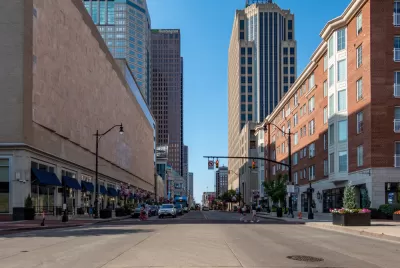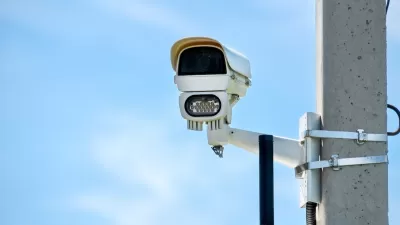The city council will vote on a proposal to lower speed limits to 25 miles per hour to improve safety and make downtown more walkable and welcoming to pedestrians.

Downtown Columbus could see its speed limit lowered to 25 miles per hour if the city council approves a proposal at this Tuesday’s meeting, reports Mark Ferenchik in The Columbus Dispatch.
According to Ferenchik, “The Downtown streets where speed limits would be limited to 25 mph are in an area bounded by Interstate 670 to the north, Interstate 71 to the east, Interstates 70 and 71 to the south, and the Scioto River and Neil Avenue to the west,” as well as part of the Scioto Peninsula.
The new rule would lower the speed limit from 35 miles per hour, a decrease that is shown to drastically reduce the risk of serious injury and death in crashes involving pedestrians. “Officials in Austin, Texas, studied intersections in that city where similar changes were made and found an 18% reduction year-to-year in the number of pedestrians hit by left-turning vehicles at Downtown intersections.” The plan must be approved by the Ohio Department of Transportation (ODOT) to move forward.
As part of its Vision Zero goal, the city also plans to adjust traffic light timing to slow traffic and change light timing at some intersections to give pedestrians a head start when crossing. The changes would align with the strategic plan developed by the Columbus Downtown Development Corporation, which calls for a more walkable downtown.
FULL STORY: Columbus City Council considers setting speed limit on all Downtown streets at 25 mph

Alabama: Trump Terminates Settlements for Black Communities Harmed By Raw Sewage
Trump deemed the landmark civil rights agreement “illegal DEI and environmental justice policy.”

Planetizen Federal Action Tracker
A weekly monitor of how Trump’s orders and actions are impacting planners and planning in America.

Why Should We Subsidize Public Transportation?
Many public transit agencies face financial stress due to rising costs, declining fare revenue, and declining subsidies. Transit advocates must provide a strong business case for increasing public transit funding.

Understanding Road Diets
An explainer from Momentum highlights the advantages of reducing vehicle lanes in favor of more bike, transit, and pedestrian infrastructure.

New California Law Regulates Warehouse Pollution
A new law tightens building and emissions regulations for large distribution warehouses to mitigate air pollution and traffic in surrounding communities.

Phoenix Announces Opening Date for Light Rail Extension
The South Central extension will connect South Phoenix to downtown and other major hubs starting on June 7.
Urban Design for Planners 1: Software Tools
This six-course series explores essential urban design concepts using open source software and equips planners with the tools they need to participate fully in the urban design process.
Planning for Universal Design
Learn the tools for implementing Universal Design in planning regulations.
Caltrans
Smith Gee Studio
Institute for Housing and Urban Development Studies (IHS)
City of Grandview
Harvard GSD Executive Education
Toledo-Lucas County Plan Commissions
Salt Lake City
NYU Wagner Graduate School of Public Service





























